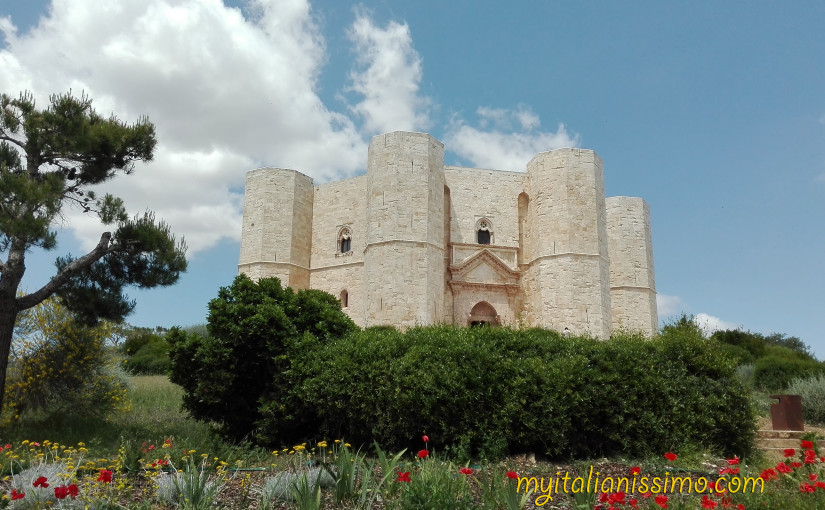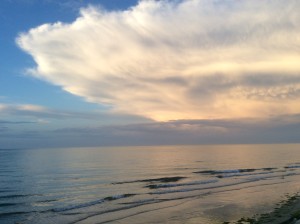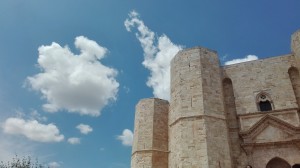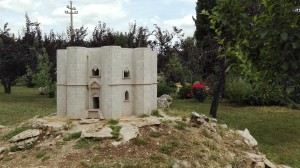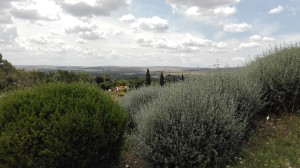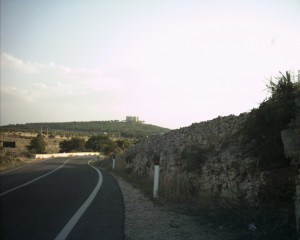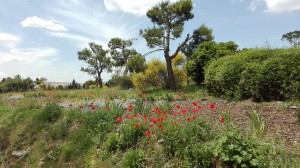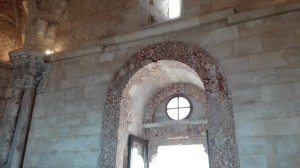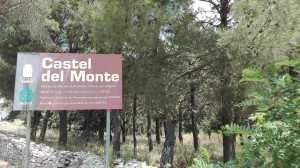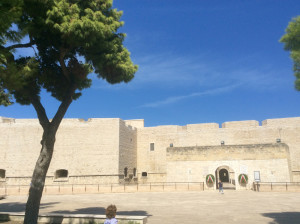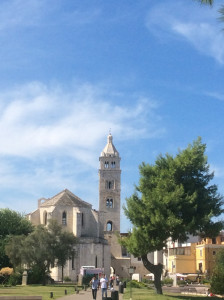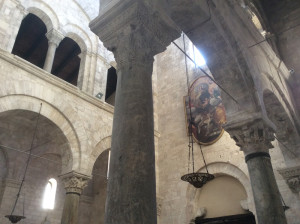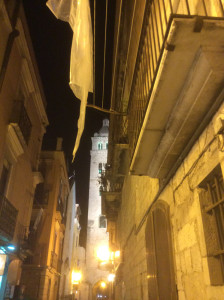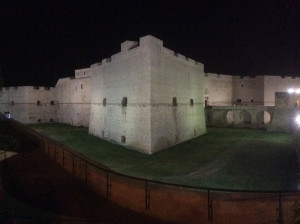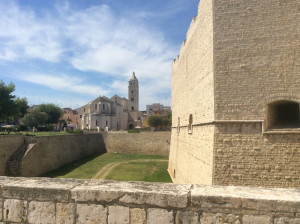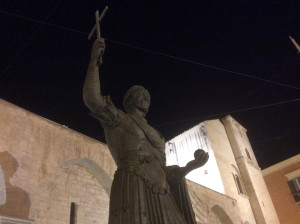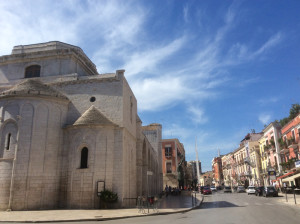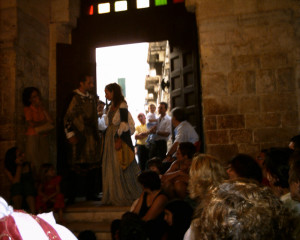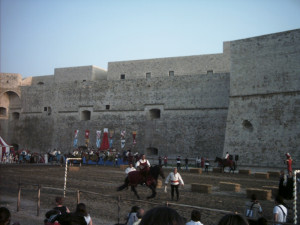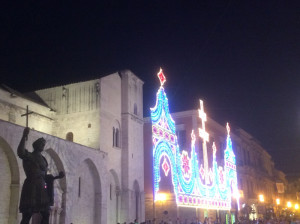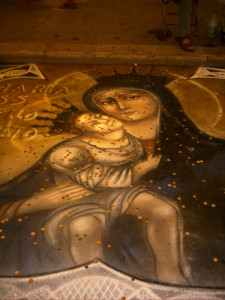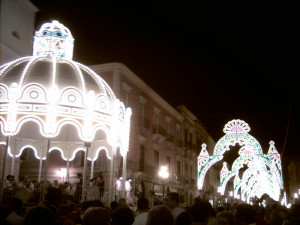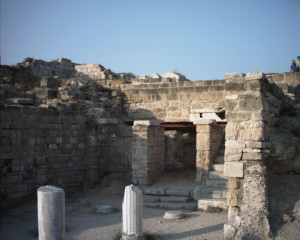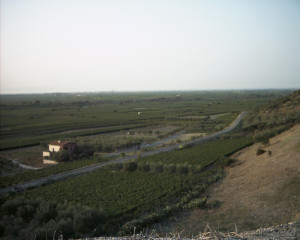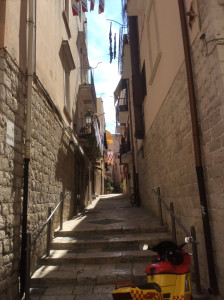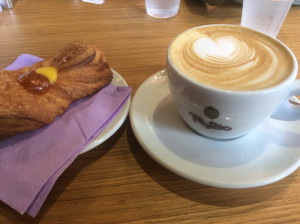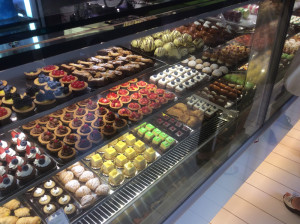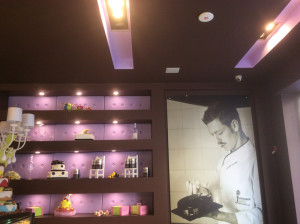Castel del Monte, parked on a hill near Andria, in a very panoramic position offering unparalleled views of the surrounding landscape, is one of the most enigmatic sites in the world. It is a must-see for every Apulia-bound tourist.
We are in 1200s… following the track left by a man who changed the history of Southern Italy – Frederick II of Hohenstaufen. His passage here was more than just a joyful occasion.
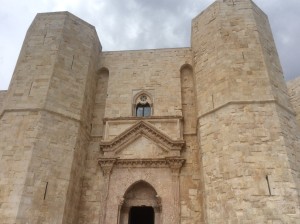
The castle is part of a much larger network of castles, as Frederick built lots of them along the Adriatic coast. It is a monument to his reign, a perfect building for a perfect ruler. Viewing himself as the legitimate successor to the Roman Emperors of Antiquity, Frederick commissioned this stone crown for himself.
The octagonal motif runs through the entire castle: it has eight octagonal towers, eight rooms on each floor, as well as an eight-sided courtyard in the centre. The octagon is the intermediate figure between the circle (representing the infinite sky) and the square (the symbol of the earth), hence the emperor was seen as the holy instructor of humanity.
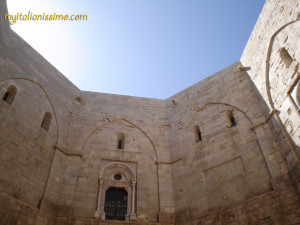
Frequently examined, the castle hides an enigma. We are in the Middle Ages. Why would Frederick II (1194-1250) commission this architectural masterpiece, most probably around the year 1240, with that octagonal plan and all those specific astronomical and mathematical references? We don’t know it for sure. One of the surviving beliefs is that the castle and its geometrical figures derive from the application of the ancient Chinese art of Feng Shui, which harmoniously combines elements of buildings and nature.
Some scholars say it served as a citadel, or, that the emperor used it as a hunting lodge. Its military function has been excluded, as it had neither a moat nor a drawbridge. In the halls you can still see some polychrome marble refinements, but nothing unfortunately remains of the décor that once pleased Frederick’s eyes.
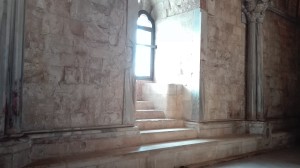
The presence of baths and fireplaces on both floors, as well as its fine decoration, suggest the castle might have been used as a residence. And yet again, some are convinced there was a link between the castle and the Templars. Anyway, it is a complex architectural work, which includes fine mathematical , geometrical, and even astronomical knowledge.
Here Frederick spent a lot of time training his falcons and birdwatching. Numerous scholars were invited to his court to dispute scientific matters. Frederick inherited German, Norman, and Sicilian blood, but he was brought up the Sicilian way and loved the island very much. He lived and left lots of sites behind in Apulia, and used his imperial power to expand the Sicilian Kingdom into Italy.
To get to the castle, we drive away from the Adriatic shore and enter the Altopiano delle Murge. Apulia is the easternmost region of Italy. It is really beautiful, with about 800 km of coast and extraordinary landscape, which Frederick would lovingly call his garden.
Frederick was called stupor mundi, the ‘astonishment of the world’. He spoke Latin, Sicilian, German, French, Greek and Arabic, promoted science and literature through the Sicilian school of poetry which, as Dante points out, had a great influence on what was to become the modern Italian language. He also wrote lyrics himself, which has been preserved to the present day.
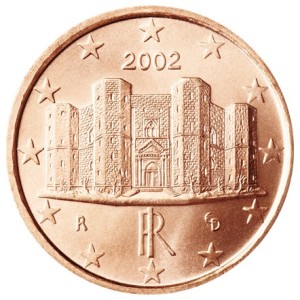
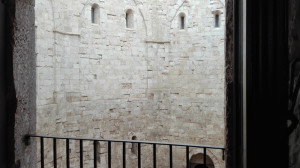
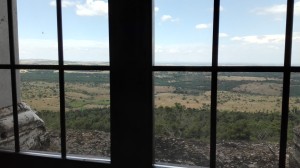
Beautiful halls covered by cross ribbed vaults held up by semi-columns in coral crushed stone.
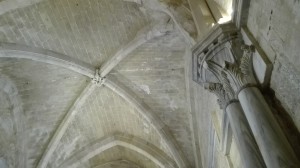
The castle is a UNESCO World Heritage Site, an outstanding example of the Middle Ages, though reflecting a different image of it. Here different cultures blend together harmoniously, making this site one of a kind and absolutely unmissable.
